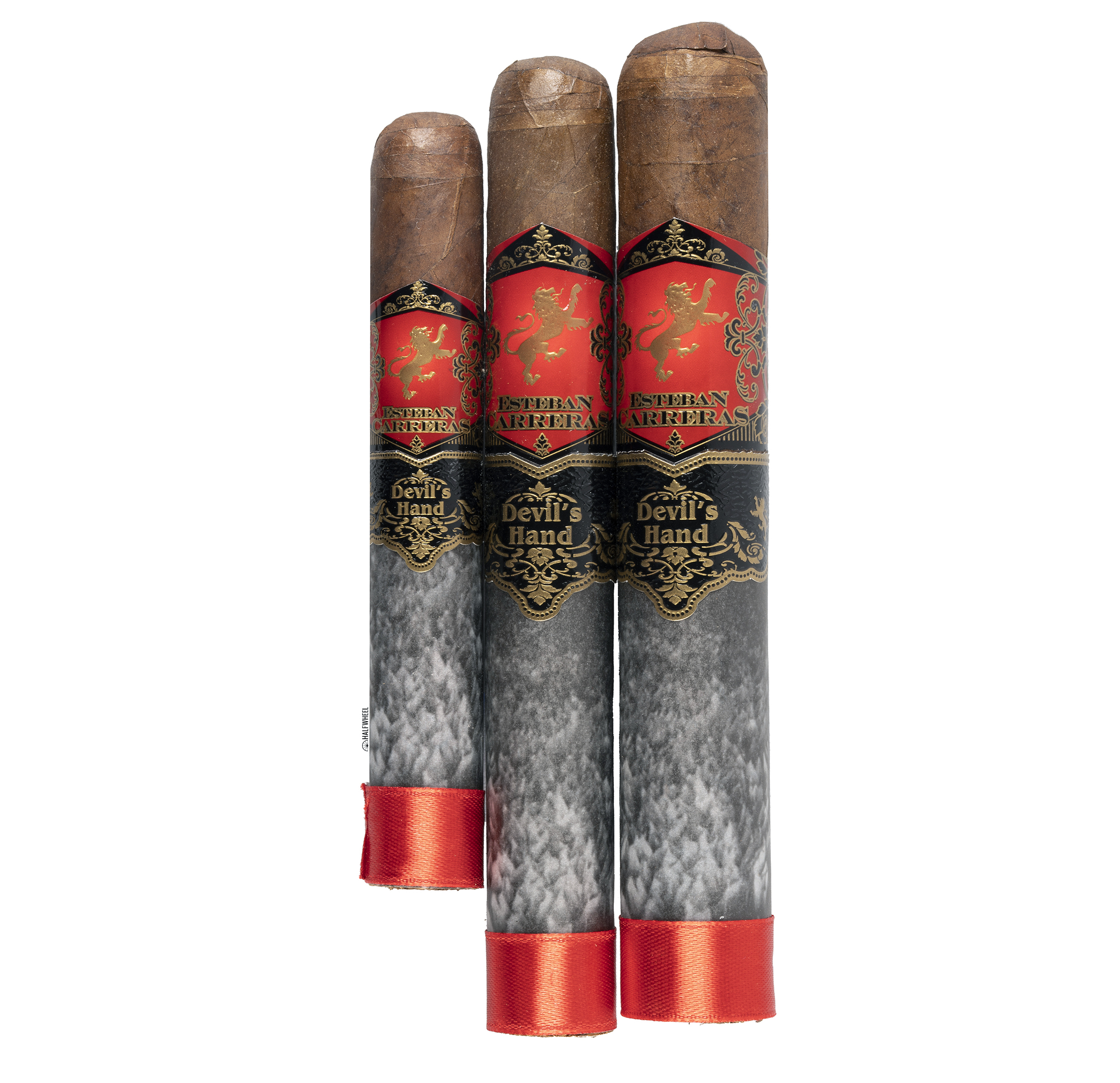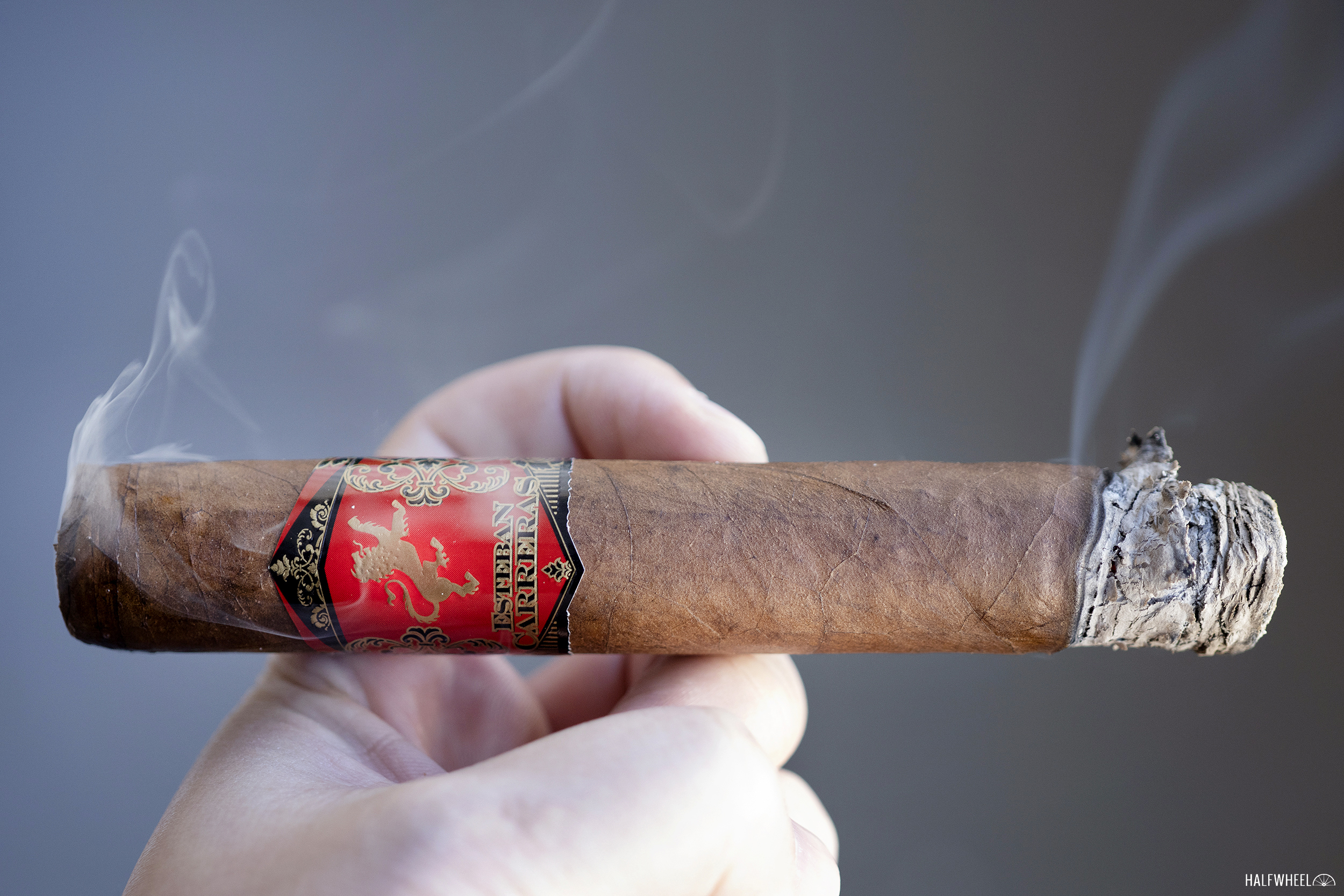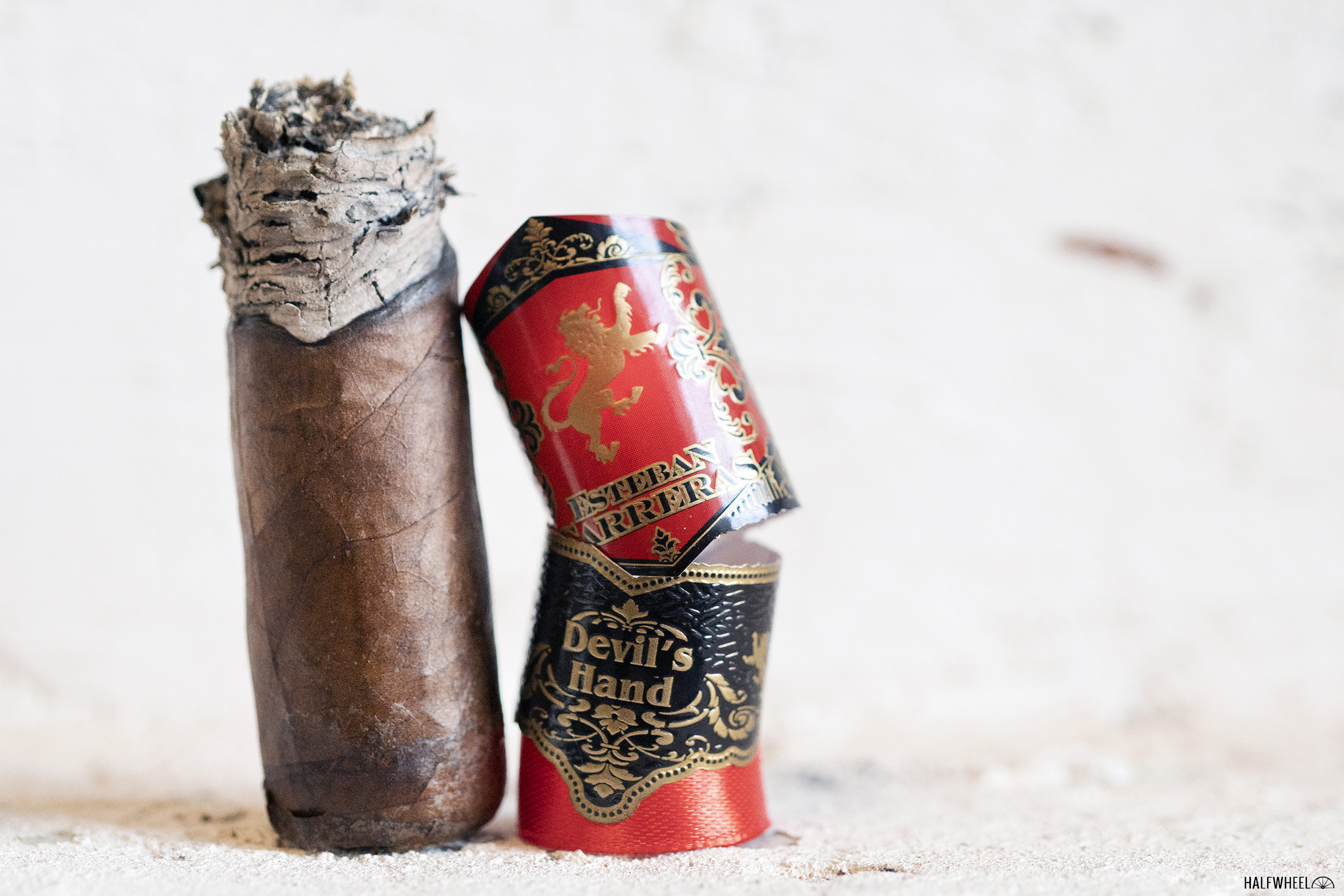I’ve mentioned before that Rocky Patel Premium Cigars, Inc. launches new products at the annual PCA Convention & Trade Show: three new full production lines each trade show, some extensions to existing lines, usually a couple of new packaging options, and new accessories. While the products change from year to year, the strategy does not. Years ago, Patrick Lagreid mentioned that Esteban Carreras also has a remarkably consistent approach to new products at the trade show: one new line each year.
Specifically, he mentioned this in his coverage of the Esteban Carreras booth at this year’s PCA Convention & Trade Show:
In the time that I have been covering the PCA Convention & Trade Show—which was formerly known as the IPCPR Convention & Trade Show—few companies have been as consistent with its plans as Esteban Carreras. The process generally goes something like this: I e-mail Craig Cunningham, owner of Esteban Carreras, sometime in late April or early May and ask him what he’s planning on for the show, and he tells me that I know how he works, which is that he will have a new line and won’t be disclosing the details until the trade show doors open.
This year’s lone new line is called Taken From The Devil’s Hand and has one of the more interesting backstories. Gonzalo Puentes runs the Esteban Carreras factory in Estelí, Nicaragua. He once worked for the Ministry of Agriculture in Cuba, predictably working on tobacco.
More from Patrick’s booth coverage:
As the story is told, Puentes and his colleagues were tasked with developing improved corojo seeds, so they used positive selection to select the strongest plants; for example, start with 100 plants, take the seeds from the best five, plant those seeds, and repeat a few times. Except instead of giving the best seeds to the government, they were kept and smuggled out of the country, while less desirable seeds were handed over. Thus, they had taken the crop from the devil—Fidel Castro—and his regime.
According to Craig Cunningham, owner of Esteban Carreras, those seeds were smuggled out of Cuba in the early 1990s and then grown in Ecuador and Nicaragua.
As for the blend, it’s a Nicaraguan puro with a corojo wrapper, dual binders from Estelí and Jalapa, and filler tobaccos from Condega. The line debuted in three sizes:
Note: The following shows the various Esteban Carreras Taken From The Devil’s Hand releases over the years. Some of these cigars may have been released after this post was originally published. The list was last updated on Oct. 30, 2022.

90
Overall Score
Perhaps Esteban Carreras should work more with corojo wrappers. I found the Esteban Carreras Taken From The Devil's Hand Sixty to be a smooth cigar that starts with a wide array of full flavors, eventually finishing more towards medium. Despite the dark wrapper, the name, and, in this particular vitola's case, the size—all of that came without that much nicotine. Certain puffs in the first half of the cigar had more flavors than I could identify at a single time, but that's decidedly a good problem to have. While it may not have the finesse to put into the uppermost echelon of cigars, this is a very good blend and one that I'm looking forward to smoking in the other sizes.

- Cigar Reviewed: Esteban Carreras Taken From The Devil's Hand Sixty
- Country of Origin: Nicaragua
- Factory: Tabacalera Carreras
- Wrapper: Nicaragua (Corojo)
- Binder: Nicaragua (Estelí & Jalapa)
- Filler: Nicaragua (Condega)
- Length: 6 Inches
- Ring Gauge: 60
- Vitola: Gordo
- MSRP: $12 (Box of 20, $240)
- Release Date: July 2022
- Number of Cigars Released: Regular Production
- Number of Cigars Smoked For Review: 3
While there are plenty of cigars that come with large pieces of paper covering more than half of the surface area of the wrapper, most of the time, those are either plain pieces of paper or pieces of paper with the cigar’s name on it. This is different as the paper has some graphics that I initially thought looked like tobacco plants, though given the cigar’s name I suspect they are actually flames. Interestingly, both the secondary band and the ribbon towards the foot are attached to the paper, which means everything slides off in one motion and without damaging the cigar. As for the wrapper’s color, it’s a dark brown color with some mild reds, and then veins that are a tad more prominent than average. The initial sniff of the wrapper smells like barnyard and dark chocolate, but I can also pick up some leather and smells of french fries. This is an extremely potent aroma and I can smell some of it even when the cigar is sitting on the table, roughly two feet away from my nose. The foot is not as intense—medium-full or full—and has nuttiness, creaminess, something that reminds me of the smell of watermelon rind, mild coffee flavors and a touch of the smell of printer paper, the latter of which I oddly do not find on the wrapper. Cold draws produce flavors of pasta, oatmeal, pizza dough, vanilla cake batter, some cantaloupe and generic bread flavors. It’s medium-full in intensity and everything is very intertwined and I’m sure there are some other flavors I am leaving out here.
I found the cold draw to be a touch tighter than the average and certainly tighter than the ring gauge would suggest, but each cigar has a smooth draw once lit. Flavor-wise, the Taken From The Devil’s Hand Sixty begins very woody with some semi-sweet barnyard, mild toastiness and a Cap’n Crunch-like flavor in the finish, though it’s not as sweet. While the first puff is medium-plus in flavor intensity, subsequent puffs nudge the cigar closer to full. A semi-sweet bread flavor—not as sweet as the cake batter I found in the cold draw—along with earthiness and some tartness sit over leather and bits of both white pepper and black pepper. It’s intertwined, though not as much as the cold draw. The finish has earthiness, nuttiness, black pepper and minor amounts of white pepper and orange bitters. There’s also an underlying toasty aspect that I don’t notice until after the smoke has left my nose. Retrohales are led by creaminess followed a bread-like flavor that at times tastes like pizza dough but other times is more like Ritz crackers. Behind those two flavors is a mushroom-like funkiness, a sweet generic fruitiness, rye bread and a sharp red pepper. There’s also black pepper and toastiness, but I think that’s more a result of the non-nasal puffs. The finish is medium-plus compared to the full-flavored retrohale. It has lots of mineral flavors over dry herbs, black pepper, toastiness and remnants of the fruitiness. Flavor is full, body is medium-plus and strength is medium-plus. Construction is great outside of some draw issues with a cigar that developed a crack upon cutting.

A pretty generic earthiness becomes the lead flavor during the second third of the Esteban Carreras Take From The Devil’s Hand Sixty. The more notable change is the addition of a mushroom flavor, which is much more like actual mushrooms than the mushroom-like sensation that gets mentioned in regards to some Davidoff cigars or some types of Dominican olor tobacco. Black pepper and red pepper drown out whatever is left of the white pepper, and the aforementioned cake batter flavor is present on some puffs. It definitely seems like the number of flavors calms down shortly before the halfway mark. Earthiness and mushrooms are present on the finish as well, though the cigar is a lot woodier. There’s also some creaminess and black pepper, which creates an interesting contrast when both flavors are present on a single puff. Retrohales have toastiness, a generic bread flavor, red apples, white pepper and straw. The flavors come one after another in a period of less than five seconds, a nice change compared to the intertwined nature of the flavors at some earlier points of the cigar. The finish sees that straw flavor pick up and morph a bit more into a grain-like sensation. There’s also red pepper, toastiness and, at times, some metallic-like sensations. Flavor is full, body is medium-plus and strength is medium-plus. While I wish the cigar was a bit thinner for my comfort, the large ring gauge shines when it comes to construction: draws are easy, smoke production is plentiful and there’s no threat of the cigar going out.

Flavor-wise, it’s tough to define where the second third ends and the final third begins, as the two are pretty similar: earthiness slightly edges out a list of flavors that includes leather, creaminess, mushroom, oak, white pepper, and grains. That said, there’s never a single puff where all of those flavors are present, or at least not one where I can detect all of them. The finish is different due to an uptick in mineral flavors, the return of white pepper and a reduction in intensity, now closer to medium-plus. Retrohales are also milder with the cake batter flavor and grains leading white pepper and toastiness. The finish is much toastier and also has some of the mineral flavors—perhaps that’s more from the smoke in my mouth than through my nose—but there’s also sweeter fruitiness and leather. Flavor recedes to medium-plus, body is medium-plus and strength is medium. While the smoke production thins out a bit, construction remains great until the end.

Final Notes
- I initially thought this line was just called “Devil’s Hand” given that’s what the bands seem to say. The boxes have the “Taken From” on both the outside and the interior. Interestingly, the “The” part of “The Devil’s Hand” doesn’t seem to have made it.
- According to the company, this is the first Esteban Carreras cigar to use a corojo wrapper.
- The first cigar, the one that was photographed, developed a crack after cutting. This is something that is happening to me more than usual of late, to the point where I’m going to start trying to see if it’s a result of something I’m doing. Given that two of three cigars had no issues, I do not think this is related to the wrapper. That cigar had a looser draw, though if I pressed my lips a bit tighter that fixed the issue. I didn’t deduct any points for the draw issues.
- The construction was fantastic on the other two cigars.
- I was curious about the “Boolit” name for the 4 3/4 x 46 vitola. Patrick Lagreid—who if it’s not obvious by now is the resident Esteban Carreras expert at halfwheel—told me that it’s been used on other lines and is pronounced like the word “bullet.”
- Cigars for this review were purchased by halfwheel.
- Final smoking time was just under three hours.
- Site sponsor Atlantic Cigar Co. carries the Esteban Carreras Take From The Devil’s Hand Sixty.
90
Overall Score
Perhaps Esteban Carreras should work more with corojo wrappers. I found the Esteban Carreras Taken From The Devil's Hand Sixty to be a smooth cigar that starts with a wide array of full flavors, eventually finishing more towards medium. Despite the dark wrapper, the name, and, in this particular vitola's case, the size—all of that came without that much nicotine. Certain puffs in the first half of the cigar had more flavors than I could identify at a single time, but that's decidedly a good problem to have. While it may not have the finesse to put into the uppermost echelon of cigars, this is a very good blend and one that I'm looking forward to smoking in the other sizes.
I am an editor and co-founder of halfwheel.com/Rueda Media, LLC. I previously co-founded and published TheCigarFeed, one of the two predecessors of halfwheel. I have written about the cigar industry for more than a decade, covering everything from product launches to regulation to M&A. In addition, I handle a lot of the behind-the-scenes stuff here at halfwheel. I enjoy playing tennis, watching boxing, falling asleep to the Le Mans 24, wearing sweatshirts year-round and eating gyros. echte liebe.







